 Cadmium in Phosphate Fertilizer: Part 2 The Present
10. 03. 2018
#Fertilizer feedstock
Cadmium in Phosphate Fertilizer: Part 2 The Present
10. 03. 2018
#Fertilizer feedstock

When the EU first began discussing the problem of the heavy metal cadmium in phosphate fertilizers in 1997 few could have realized the amount of environmental, economic, political, and even geopolitical turmoil that potential legislation would invoke.
As Andrea Ulrich, PhosAgro’s Head of Government Affairs and Compliance based in Zurich states, “For over 20 years, no harmonised measures have been adopted because confusion remains about the basis for, and level of cadmium limits [in fertilizer].”
At present, the proposals for restrictions on cadmium levels and required labelling of phosphate fertilizer differ between the three branches of EU government, but generally start at “an initial limit of 60 mg/kg P2O5.”
The problem stems from politics. As the vested interests of opposing national governments, agribusiness, NGO’s, environmentalists, and partisan groups, lobby for position.
Even the EU itself has fears about limiting the market for phosphate raw materials. As Euractiv notes, “The European Commission’s impact assessment raises concerns about Russia’s production capacity and acknowledges its own supply perils.”
This is because, “In the EU, the only commercially viable source of low-cadmium phosphate is in Finland, but it produces less than 1 million tonnes, not enough to meet the EU’s needs. [Whereas] Experts note that Russia is the only country that could meet the EU’s 20mg/kg cadmium threshold and satisfy European fertiliser needs.”
Click to read Cadmium in Phosphate Fertilizer Part 1: The History.
The wording in the assessment is quite clear on the matter, stating that, “Practically, the entire EU supply would depend on one single phosphates-exporting country, in the current circumstances Russia.”
The fact that Europe is already dependent on Russian gas supplies to stop its population from freezing, will not make it easy to introduce laws that also make Europe dependent on Russia to stop its population from starving.
Added to the voices of concern are NGO’s such as the London based Safer Phosphates, who stated their views in an open letter (pdf) to EU legislators that it, “… would like to reiterate its support for:
- The European Commission`s proposal to limit Cadmium (Cd) values in phosphate fertilizers to a maximum of 20 mg/kg P2O5, in order to protect the longer-term wellbeing of EU consumers.
- The right for consumers to know what is in the fertilizers they are using, through clear labelling of ingredients assuring the lack of contamination.”
Meanwhile, another NGO, Western Sahara Resource Watch (WSRW), lays out its side of the argument, observing that, “Morocco’s state-owned phosphate company OCP has been very negative to the EU's suggested regulation on the poison [cadmium]. Phosphate rock from North Africa is high in cadmium. The proposed regulation would thus over time result in the nullification of OCP’s sales figure to the EU, which it puts at 34%.”
Adding that, “OCP thus unleashed an intense counter-lobby, arguing that the Commission should in fact consider raising the allowed cadmium rate to 80 mg/kg.”
This influence has made ripples in the governments of Europe, such that the Spanish Minister for Agriculture, Isabel García Tejerina, announced on 21 February 2018 that Spain will oppose the 20 mg/kg limit, “…out of consideration to Spanish farmers and fertilizer producers.”
The WSRW website also reports that, “Tejerina, having a professional background in the fertilizer sector, argued that political opponents in Spain showed ‘disinterest’ to farmers.” And that, “The Spanish market should be able to use phosphorous proceeding from the African phosphate rock. Too strict cadmium limits would exclude us from the market of phosphate fertilizers.”
It is generally thought that France, the UK, Poland, Bulgaria, Romania, and Portugal are aligned with Spain on the issue.
Meanwhile, the industry group Fertilizers Europe, made its position clear with the following statement, “Fertilizers Europe strongly criticizes the proposal of the European Commission to set overly ambitious limits on cadmium content in phosphate fertilizers. A limit of 60mg cadmium/kgP2O5 strikes the right balance and ensures a gradual depletion of cadmium in soils. Phosphate is vital both for human beings and plants, but Europe only produces 10% of the necessary supply. Thus, access to sufficient raw material from a variety of producer countries outside Europe is a necessity from a food security perspective. Setting a very low level of eventually 20 mg cadmium/kgP2O5, far below what is needed to safeguard environmental concerns and ignoring the findings of their own impact assessment, works against the access to raw material.”
“The commission is proposing a leap into the dark” says Jacob Hansen, General Director at Fertilizers Europe, “without knowing whether it is possible to land on its feet. Only one thing is for sure, it will make phosphate fertilizers more expensive, thus creating additional costs for European farmers who have to compete more and more on world markets.”
The group cites a 2014 report that states that, “…setting a limit of 20 mg would exclude only half of P fertilizers, a limit of 40 mg would exclude 32%, and a limit of 60 mg would exclude 9%.”
AG CHEMI GROUP is a supplier of industrial raw materials for fertilizers, including potassium sulfate and potassium carbonate.


If you are interested in fertilizer feedstocks, or need agrichemical raw materials, then please contact the friendly, multi-lingual sales team, or take a look at the AG CHEMI GROUP catalogue.
Such is the posturing of the debate. Arguments and counter-arguments that go back and forth from report to study, from analysis to announcement. Each trying to persuade legislators and public opinion of the strength and scientific veracity in their case.
But like the internet shouting match, much of the nuance (and science) of the debate is lost. At this point it is difficult to know what the truth is and where the future for fertilizer feedstock lies.
Photo credit: FarmersWeekly, MyersDetox, ManureManager, Luke, OpenSea, Siman, & PeriodicTable